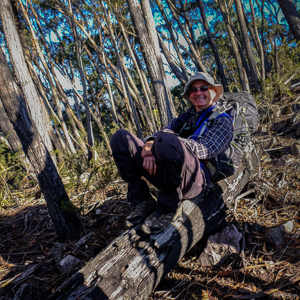Guide to the Grades
The description of each grade includes several dimensions (quality of track, gradient, distance, suitable for beginners etc). When a walk does not exactly match all of the descriptors for any of the grades, assign the grade whose descriptors most closely match the walk.
Leaders could include any special features of the walk (exploratory, creek crossing, narrow ledge, rope assisted scramble) when advertising the walk.
- Grade 1
- Well marked even tracks with a few steps. Should not be steep, Distance should not exceed 10 km. Suitable for beginners.
- Grade 2
- Well marked tracks. Should not be steep. Distance should not exceed 15 km. Suitable for beginners.
- Grade 3
- Defined track with sections of off track walking. May have hilly sections with rough terrain and rock scrambling. Suitable for fit beginners.
- Grade 4
- Mostly off track or long track. May have steep sections with rough terrain, rock scrambling, creek walking and thick scrub. Distance should not exceed 30 km, but may be short and difficult. Not suitable for beginners.
- Grade 5
- Very long track or strenuous off-track walk. May have steep sections with rough terrain, rock scrambling, creek walking and thick scrub. Only for experienced walkers. Not suitable for beginners.
Technical canyon activities are graded numerically, 1 through 5, according to the skill level that canyoners require for safe participation in the activity without requiring close monitoring from more skilled canyoners.
The description of each activity grade takes into account the physical nature of the canyon, prevailing environmental conditions, risk mitigation strategies and safety ratios. When a canyon does not exactly match all of the descriptors for any of the grades, the grade whose descriptors most closely match the canyon is used. Leaders could include any special features of the canyon (e.g., very cold, long swims, duck-unders, etc.) when advertising the canyon trip.
The activity grades correspond to canyoner skill levels defined in the UBMBC - Canyon Activity Grading document. For example, a canyoner with skill level 3 has the skills required to safely descend a grade 3 canyon without close monitoring.
Gradings indicate a progression of difficulty.
- Grade 0
- No abseils. Suitable for Non-technical Canyoners.
- Grade 1
- A canyon with short abseils and easy starts. A short day. Suitable for Beginners who are participating in the beginner practice session.
- Grade 2
- The canyon may involve abseiling near waterfalls, more difficult starts, negotiating overhangs, constricted passages and scrambling over boulders. Suitable for Grade 2 canyoners (Working towards Competent).
- Grade 3
- The canyon may involve longer abseils, exposed anchors, off track approach and exit, abseiling in waterfalls and into pools, negotiating difficult overhangs, dark narrow slots, swims, negotiating cliff lines, extended creek walking with wading. Maximum one day. Suitable for Grade 3 canyoners (Competent). Grade 2 canyoners may participate in Grade 3 activities with close monitoring.
- Grade 4
- The canyon may involve difficult abseils, duck-unders and prolonged immersion. Suitable for canyoners with a Grade 4 (Working towards Advanced) skill level. A long day.
- Grade 5
- These canyons require a high level of technical skill and fitness. It may involve difficult multi pitch abseils, abseiling in high water flows, exposed ledges and anchors, jumping and sliding into deep pools, technical scrambling, use of traverse lines, prusiking, longer slot canyon formations, rugged trackless terrain in remote areas, a long day or multiple days. Suitable for canyoners with a Grade 5 (Advanced) skill level. Grade 4 canyoners may participate in Grade 5 activities with close monitoring.
For more details on grading refer to UBMBC - Canyon Activity Grading document.
